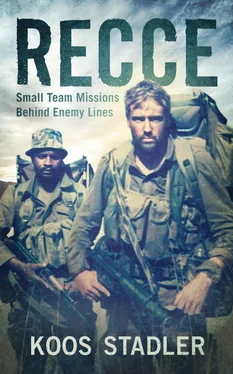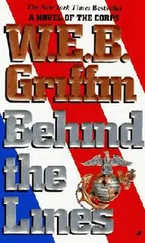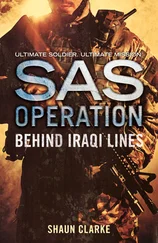After about five days in bed, I rejoined the course for the assessment phase. I passed the theory and recognition exams easily, and then went on to do the practical tracking evaluation. I was completely whacked from the diarrhoea, but managed to follow the track with relative ease and convince the instructors that I was actually a born tracker. Ray let me pass the course, albeit with a little bit of TLC, for which I am eternally indebted to him, and I was allowed to continue with Minor Tactics.
I consider the Survival course as a learning experience on a par with the training I had received from Frannie du Toit at 31 Battalion. Even after my three years with the Bushmen, I had to admit that I had never learned so much about the bush in such a short time.
Minor Tactics
This was one long route march from beginning to end. For the students it turned out to be a second selection. When not slogging through the Caprivi bush with a 35-kg pack, we were doing fire-and-movement, so the course became a long drawn-out battle with an “enemy” that was persistently following us through the bush, with the eleven of us trekking and fighting consecutive battles day after day. Since I had done the course previously under the capable Frannie, and in fact had developed my own approach to tactics and a specific style of patrolling in the bush, the course was particularly challenging, since I dared not oppose the conventional wisdom at that late stage of our training.
During the long fire-and-movement “battles”, which were all conducted with live ammunition and loads of mortar, RPG and machine gun support, all sorts of strange methods were applied to stoke the students’ aggression. One specially favoured technique was to walk behind the student and hit him with a stick, presumably to make him move faster, shoot straighter and take better cover. This was not only counterproductive but also bred resentment against those instructors who indulged in the practice. Unfortunately it remained a favourite method to induce aggression, one that I encountered repeatedly in subsequent years at Special Forces training.
There were other peculiar features of the course, such as the extended ambushes, where we had to lie in wait for hours on end in the bitter cold of night, or during the heat of day in the sun, for the “enemy” to appear. Having done this in real life more times than I could remember, I battled with the concept, since I believed it was a waste of time. To my mind the ability to wait out a real-life enemy could not be taught superficially; it demanded a certain mindset that every soldier who had passed the selection should naturally possess.
Another feature of the course was the harsh punishment for any transgression, whether committed on purpose or not. Any accidental discharge of a weapon or cheating during exercises would earn the punishment of a “spes ops”, where the candidate would be taken by vehicle to the Botswana cutline 20 km away, and dropped off with his weapon, backpack and a case of ammunition weighing 25 kg, which he then had to carry back to base. This was regularly done on a Saturday evening, so the transgressor had the whole night and the next day to think about his sins while transporting his uncomfortable load back to Fort Doppies.
I had the honour of doing a “spes ops” once, but since my transgression – an accidental discharge of the LMG on the firing range – was not considered life-threatening, I was dropped off only ten kilometres out and was back in time to catch a solid night’s sleep.
During the Minor Tactics course I met Captain André “Diedies” Diedericks, the legendary Small Teams operator I had been told about years before during my time at 31 Battalion. With his long-time buddy, Neves Thomas Matias, Diedies had conducted several two-man deployments, over extended periods and extreme distances, into neighbouring countries. Diedies and his group had established a camp somewhere in the bush and were rehearsing for a deployment when I met him one Sunday during a break in our training at Fort Doppies. The guy had a very focused aura about him; in Diedies a sense of purpose combined with a delightful sense of humour. It immediately struck a chord with me. I was surprised to find that he had heard of me when I was still at 31 Battalion recce wing. He also seemed to be aware of my dream of joining Small Teams . From that first meeting I felt a close attachment to this man who had become a legend in his own lifetime.
Diedies informed me that Small Teams might soon be relocated from Pretoria to 5 Recce, based on his recommendation that the Small Teams elements of all the units should be united under one command. The three active Special Forces units – 1 Recce at Durban, 4 Recce at Langebaan and 5 Recce at Phalaborwa – each had its own field of specialisation: as the founding unit, 1 Recce harboured the Special Forces Training Commando and specialised in airborne and urban operations; 4 Recce specialised in seaborne operations; and 5 Recce focused on bush operations. Both 4 and 5 Recce also maintained an inherent airborne capability. Each of the regiments had a reconnaissance element that was meant to conduct strategic-level recce missions.
At the time Diedies and his Small Team grouping formed part of the secretive D-40, code-named Project Barnacle and based outside Pretoria (it was the forerunner to the Civil Cooperation Bureau, or CCB). But Barnacle’s undercover status would soon cause Small Teams to be relocated to one of the regiments, as the operators were constantly exposed to the overt structures of Special Forces. Diedies often had to visit Special Forces HQ for intelligence briefings and liaison, while the operators had to do their specialised military training at the Reconnaissance Regiments. For me, the planned relocation of Small Teams to Phalaborwa was good news, as I knew by then that I would be heading for 5 Recce soon after the training cycle.
From that first meeting with Diedies at Fort Doppies, a long and true friendship flowed. It continued in subsequent years when we operated together on a number of extremely demanding and dangerous Small Teams operations, and beyond that through periods of very trying times of a different nature.
I knew that I had to get to Small Teams as soon as possible, as this had been my sole purpose for joining Special Forces. I didn’t want to waste any more time. But I had to stick it out on the training cycle and get the Special Forces operator’s qualification before I could move on. Fortunately the final stages of the course went by quite quickly. There was a fantastic team spirit among the students, and we worked hard to support and motivate each other.
The last exercise – escape and evasion – flowed naturally from our perpetual fighting and moving of the previous days. We reorganised at a rendezvous way down the Western Caprivi, about 50 km southwest of Fort Doppies, where we took in a hide for the night and prepared for the next day’s “mission”. A company from 703 Battalion at Katima Mulilo was brought in to take up the chase, while local Bushmen from the Kwando would do the tracking.
The idea was that, as a Special Forces team that had been compromised deep inside enemy territory, we would evade the follow-up force while moving back to the safety of our base. The “enemy” would apply all sorts of techniques to catch us, following us back towards Fort Doppies. They had an assortment of vehicles, a helicopter and the advantage of knowing where we were heading.
Our hide was “attacked” by the instructors at 05:00 the next morning, which was the sign for us to start our evasion. The eleven students were given a thirty-minute head start, so we wasted no time in getting away. As soon as we were on the run, I split from the group, veered off to the right and started anti-tracking in a southerly direction, knowing that the follow-up would be directed at the main grouping heading northeast towards Fort Doppies. The follow-up force would certainly use the road to the left of the follow-up axis to leapfrog ahead and dispatch teams to cut us off. I also had no intention of being located by the helicopter, as that would mean certain capture.
Читать дальше












